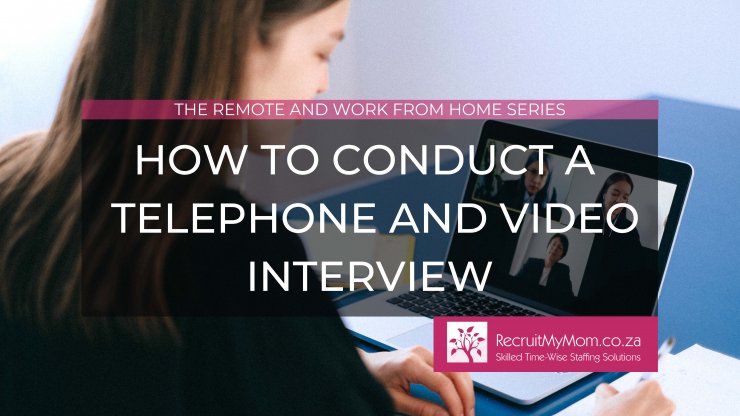
This article explains how to conduct a successful video or telephone interview. A video interview is widely accepted as the preferred method when it comes to interviewing candidates that will be working remotely.
Tone of voice and visual cues are important aspects to getting the full picture of the candidate that is being interviewed. Therefore, video interviews are preferred to telephone interviews, unless the person is being interviewed for a customer support type role, where their accent, voice, tone and manner on the telephone is imperative to the success of the job.
The advantages of using video to conduct interviews
- The ability to read body language and facial cues.
- Reduced travel expenses for candidates.
- Save time for both interviewer and interviewee.
- Video interviews demonstrate the candidate’s ability to engage with remote working technology.
- The ability to assess a candidate’s communication skills.
- You can record a video interview and replay it later for reference. This is especially useful when interviewing many candidates and comparing candidates post the interview.
Always remember to inform the interviewee if the interview will be recorded.
What to consider when setting up a video interview:
- Set the date and time and send a meeting request as one would for an in-office, normal interview.
- Ensure that the video meeting platform is clearly communicated by including a link and repeating the instructions in the written text.
- Set out any requests such as “Please ensure your camera is on and your microphone is on mute when you enter the meeting room.”
- Ensure all panel members are invited to the interview, if it is a panel interview.
- Prior to the interview clearly layout the interview procedure for the interview panelists in a separate internal email. Explain the process if they too are joining from remote locations. Example : put camera and microphone - on or off when entering the meeting. When to use the chat function, if at all. How to indicate when a question is to be asked.
- Find a quiet location to conduct the interview where there will be minimal interruptions.
- Consider your lighting and background so that these elements do not distract the candidate.
- Test the microphone and camera prior to starting the interview.
- When starting the interview, begin with welcoming the candidate and putting them at ease by asking an open ended question.
- Introduce the panel members and their designation and explain the interview process.
- End off the interview with a thank you and the date when the candidate will hear back on the success of the interview.
Tools for conducting a video interview
There are many different video applications that can be used for video interviews, here are a couple:
- Whatsapp video is an informal interview tool that is popular with graduates and youth alike for use on smartphones. It is especially useful for one on one video calls.
- Zoom provides remote video and conferencing services using cloud computing. This is a popular app for team meetings. Note that you need to download the app and need a unique meeting code and password to join. Forty minute meetings are free.
- If you are using a Gmail calendar you can schedule video meetings using Google Meet. You get a unique URL and anyone with the meeting access code can join the meeting. This only works for gmail registered email addresses.
- Cisco is a popular company communication tool. If you are a larger company, this is a good tool to consider.
- Microsoft Teams are also very popular, as many people are already familiar with the Microsoft interface.
Be aware of the downside of video interviews:
- They can be data heavy for candidates who are low income earners and cannot afford data. Consider providing a data bundle for these candidates.
- Internet connectivity can be unreliable for the candidate if they are using a mobile phone.
- The candidate may not be able to control disruptions like you can in an office environment. Be mindful of this and display understanding.
How to conduct a successful telephone interview
Although behaviour and body language cannot be observed and the interviewer cannot use any visual aids to assist in the interview, a telephone interview can give you a good idea of the candidate by their voice, tone and manner on the telephone.
What to consider when setting up a telephone interview:
- Set the date and time and send a meeting request as one would for an in-office, normal interview.
- Find a quiet location to conduct the interview where there will be minimal interruptions and distractions.
- When starting the interview, begin with welcoming the candidate and putting them at ease by asking an open ended question.
- Remember that the interviewee cannot see the body language of the interviewer. Saying “okay” or “thank you” will help guide the interviewee.
- Take detailed notes during the interview so that you don’t forget the interviewee’s answers.
- End off the interview with a thank you and the date when the candidate will hear back on the success of the interview.
Video or telephone interviews do come with unique challenges but if you follow the above-mentioned protocols and tips, it will make the process easy and effective.
RecruitMyMom has developed a remote working series to support employers with their transition to a more remote workforce. To view all the articles in this series, click here.


